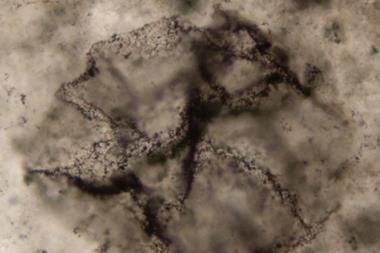Evidence backing a controversial sulfur-rich model of the Earth's oceans 1.8 billion years ago has been uncovered in molecular fossils.
Evidence backing a controversial sulfur-rich model of the Earth’s oceans 1.8 billion years ago has been uncovered in molecular fossils.
Oxygen levels in the Earth’s atmosphere began to rise just over two billion years ago. By 1.8 billion years ago iron formations in the earth’s geology had all disappeared because of this oxygen. But the amount of oxygen in the oceans immediately after this so-called mid-Proterozoic time is unknown. Opinion has been split between oxygen-rich oceans and a mainly oxygen free (anoxic), sulfur-rich oceans - both can account for the disappearing iron formations.
Jochen Brocks and colleagues at the Australian National University found 1.64 billion year old molecular fossil remains of purple and green pigments produced by phototrophic sulfur bacteria. These molecular fossils provide the first data in favour of the sulfur model of the oceans. ’The ocean north of Australia may indeed have been vastly anoxic, toxic for complex life and coloured with a shade of purple,’ said Brocks.
The fossils came from mid-Proterozoic rocks from the Barney Creek formation of the McArthur basin in northern Australia. Molecular fossils of eukaryotes - complex nucleus-containing life forms, which evolved into current plant and animals - were absent from the rocks.
This finding, combined with the sulfur-bacteria fossils, ’describe a marine ecosystem fundamentally different from anything that we know today,’ said Brocks. ’If indeed the oceans were sulfidic during this middle period of Earth’s history, it would rewrite much of what we’ve believed about a fifth of the planets history. Geochemical cycles would have been fundamentally different and many life-essential elements, such as nitrogen and copper would have been rare. It would seem that this is the reason why the world was ruled by bacteria for such a long time.’
References
Brocks, J., Love, G., Summons, R. et al. Biomarker evidence for green and purple sulphur bacteria in a stratified Palaeoproterozoic sea. Nature 437, 866–870 (2005). https://doi.org/10.1038/nature04068












No comments yet